Revenge is best served cold. Or, in this case, revenge is best served in the form of a fresh, piping-hot blog post about my favorite topic: facts about pole dancing.
One of the many, many, many trials and tribulations of writing involves pitching ideas. Almost all of them receive rejections, and when they don’t, the pieces are subject to heavy edits and criticisms.
Recently, I pitched this list to a certain listicle website that is notoriously strict with its guidelines. Alas, my post was rejected. Here’s the beautiful part about writing though. I can just use this content for myself.
Enjoy these 10 facts about pole dancing, straight from my proverbial slush pile.
Fact #1: The first pole dancers were male
These are the classic fireside tales told by pole dancers all over the world. Strip club culture celebrates female pole dancers as a majority. However, the very first instance of pole dancing was executed by men hundreds of years ago.
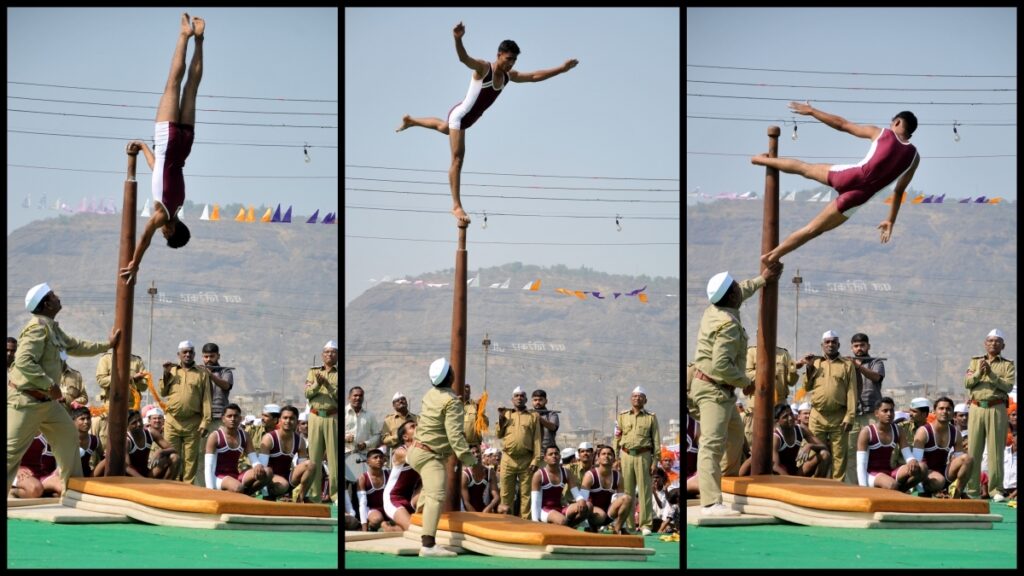
Mallakhamb is an ancient form of physical fitness in India that relied on the use of ropes and poles. In the beginning, it was practiced exclusively by men and boys. The name literally translates to mean “pole wrestling” and relied on tough skin and brute strength to do it correctly. Historically, women also participated in mallakhamb, but they stayed mostly on the ropes, leaving the heavy-duty pole theatrics to the men.
This is just one origin story. Chinese pole is another popular theory surrounding the conception of the first pole dancers, but the history is much more elusive.
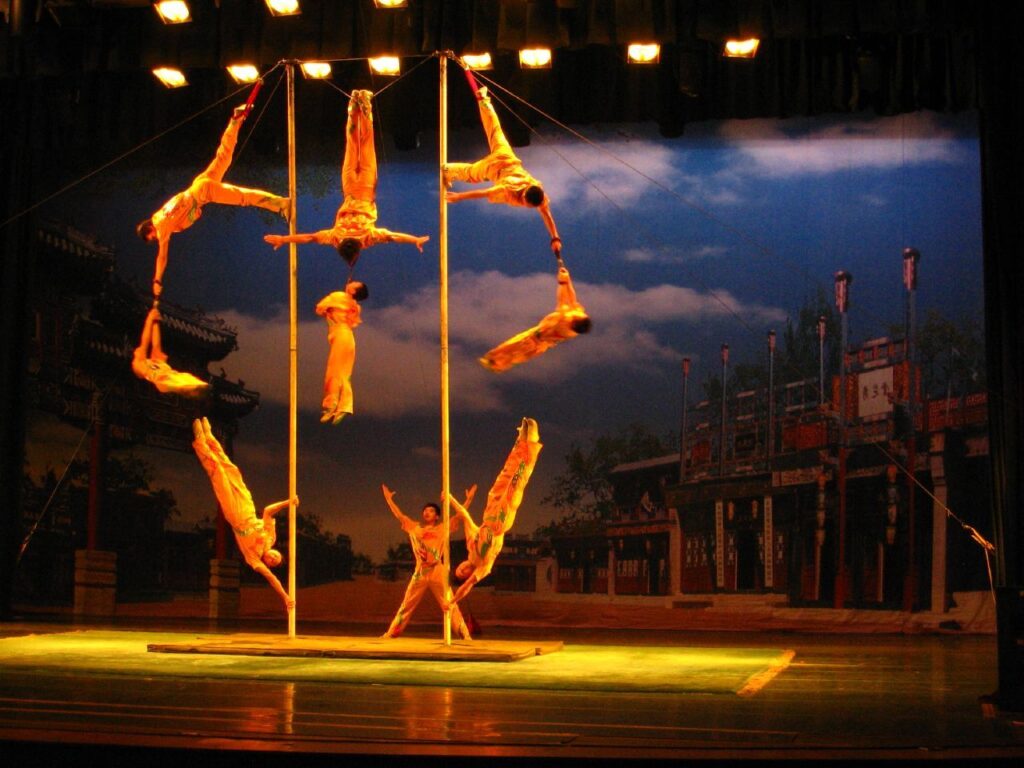
Fact #2: Pole dancing is not just for strippers anymore
With the beginnings of popular forms of pole dance stemming internationally, it is difficult to know just how massive the movement has become. Even a map of all the pole studios in the world has a hard time keeping up with the new studios opening up.
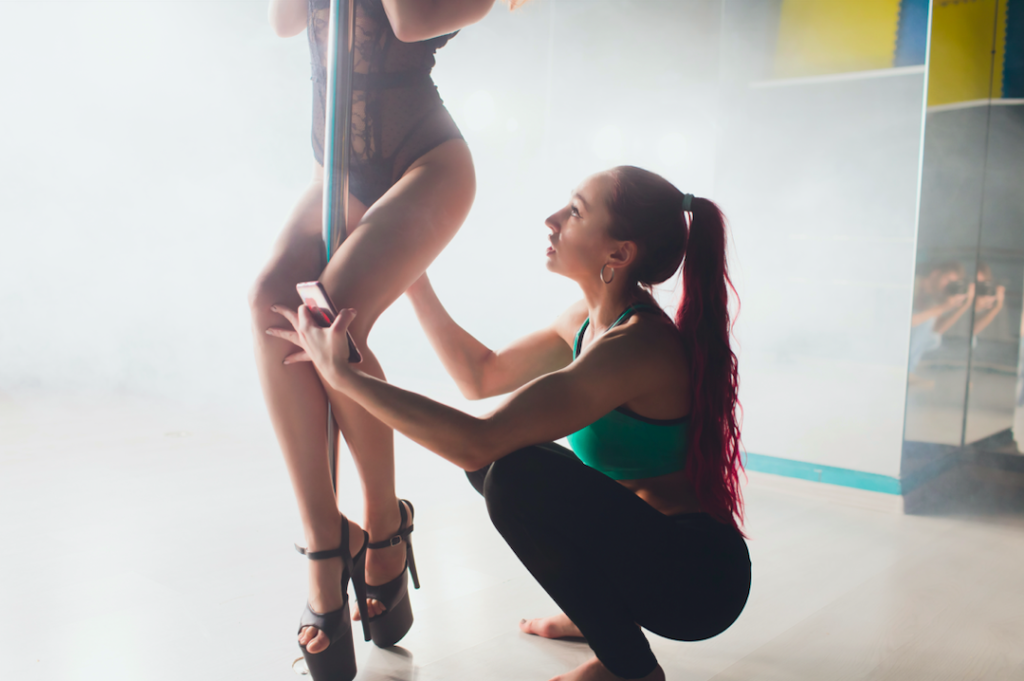
Men and women pole dance in a variety of settings, from strippers to recreational dancers to Cirque du Soleil performers.
However, the stigmatization of pole dancing does not escape other corners of the Earth. Pole dancers in countries such as Japan and Korea face a double “fetishization” of pole dancing as it combines with their heritage. Even American pole styles only receive positive attention when high-profile celebrities participate in the sport. or stick a routine in a Super Bowl halftime show.
Regardless, people of all nationalities have their own spins (pun intended) on pole dance, and aerial artists and acrobats contribute new moves and styles all the time.
Fact #3: Kids pole dance, too. One even won Russia’s Got Talent
The popularity of pole dance as a recreational activity has moved through more mainstream outlets, such as traditional fitness studios. Its availability to the general population is encouraging growth and expansion to every age group. Even senior citizens are pole dancing. Dance studios regularly offer classes tailored to a wide range of participants, and that includes children of many ages.
Pole dancing for kids is entirely PG, although many voice their opinions on the contrary. However, others argue that shifting away from the sexualization of pole dance, no matter the age group, helps to embody a sense of community that doesn’t place it in a negative stereotype. For kids classes, there are no suggestive overtones or raunchy movements involved, but the focus on being athletic – and super flexible – takes the forefront.

Kids have even been participating in televised talent contests with pole dancing. Olga Trifonova, an 11-year-old at the time, took first prize on Russia’s Got Talent in 2014 for her pole dancing routine. Not only is her routine jaw-dropping and impressive, but it reinforces the biggest downside to kids pole dancing. They outshine almost every adult pole dancer.
Fact #4: Pole dancers use more chalk than weightlifters
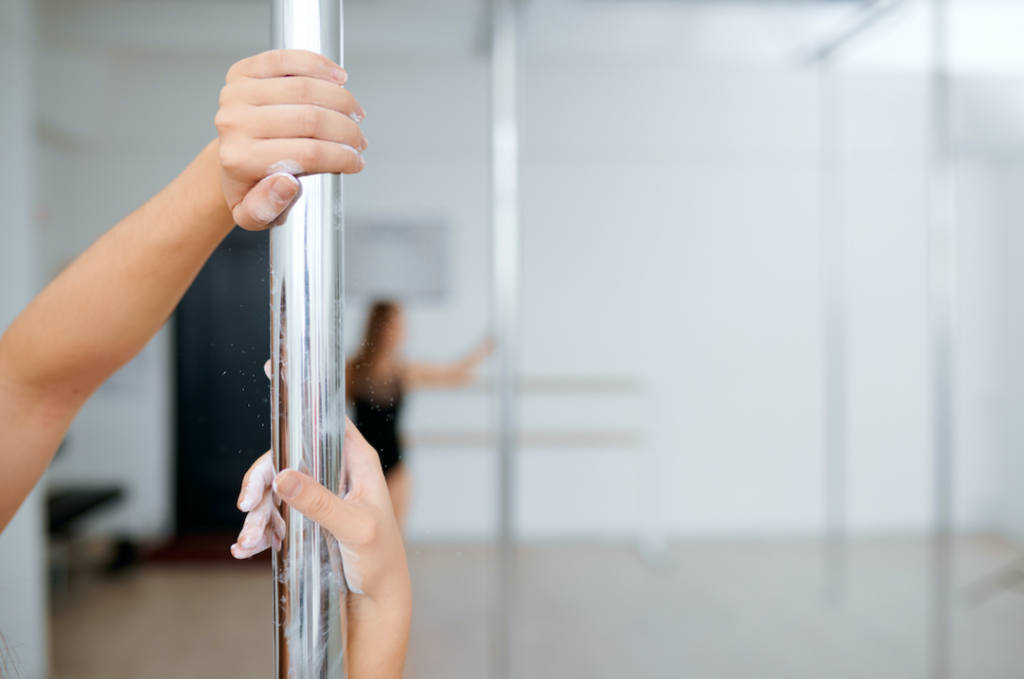
Most likely, everyone has seen a weightlifter or gymnast slapping powdered chalk on their hands before their sets or routines. Why is this?
The friction between skin and smooth surfaces can cause accidents or slips unless something strengthens the hold. Chalk facilitates the connection of sweaty palms to questionable surfaces. Groups of extreme athletes, such as rock climbers, use chalk to maintain a solid grip at all times. Besides the functionality, clapping a giant cloud of chalk into the air just looks cool.
Pole dancers use chalk too, just not the sneeze-inducing powdered stuff. Instead, they opt for liquid chalk, which applies clear and achieves the exact same effect as dry chalk without the residue. Nothing ruins a performance faster than looking like you just rolled in powdered sugar.
Fact #5: The pole spins
Does this mean that those crazy spins are not natural, athletic talent? Oh, the betrayal!
Yes, the poles can spin. Dancers, strippers, and performers are able to achieve amazing tricks on the pole, but it’s not by magic. Spinning allows for longer holds in positions while achieving amazing visuals and saving dancers a bit of energy. As far as pole dancers pulling off those tricks, the mechanics often cross over from gymnastics, ballet, and other disciplines to describe the movements.
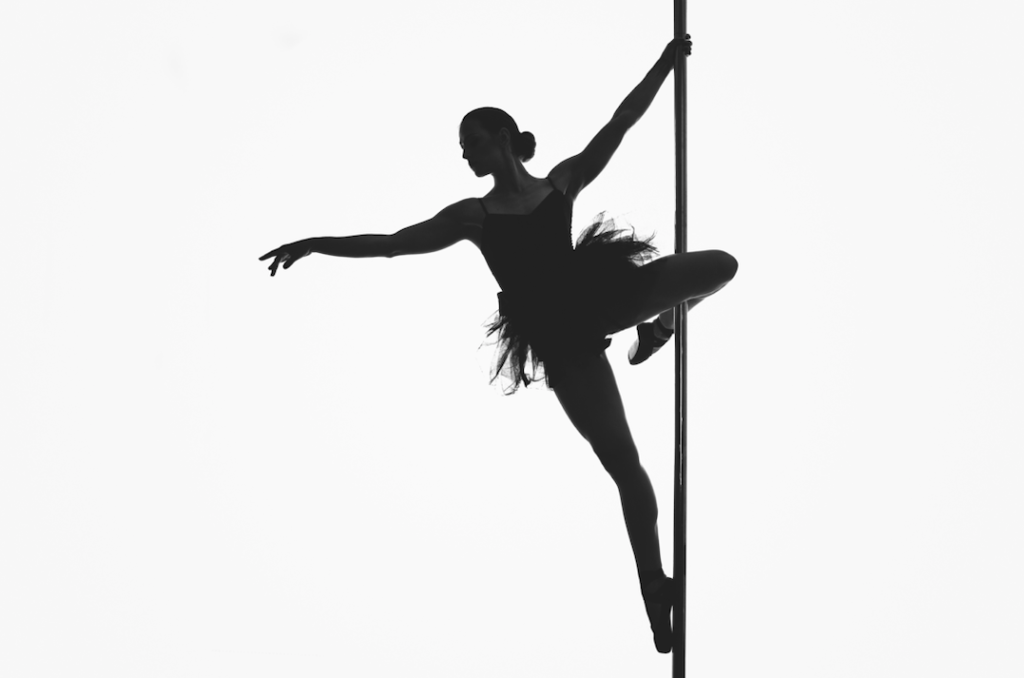
Poles don’t always have to spin, though. Most poles have locking mechanisms that allow the pole to stay motionless, or in a “static” position. This helps dancers practice tricks without the fear of spinning too quickly. Pole dancers in competitions often use both for performances, as some tricks are more suitable for spinning poles. Therefore, the risk of flying off into the farthest depths of the universe is lowered when the pole is locked.
Fact #6: Pole heels are actually comfortable
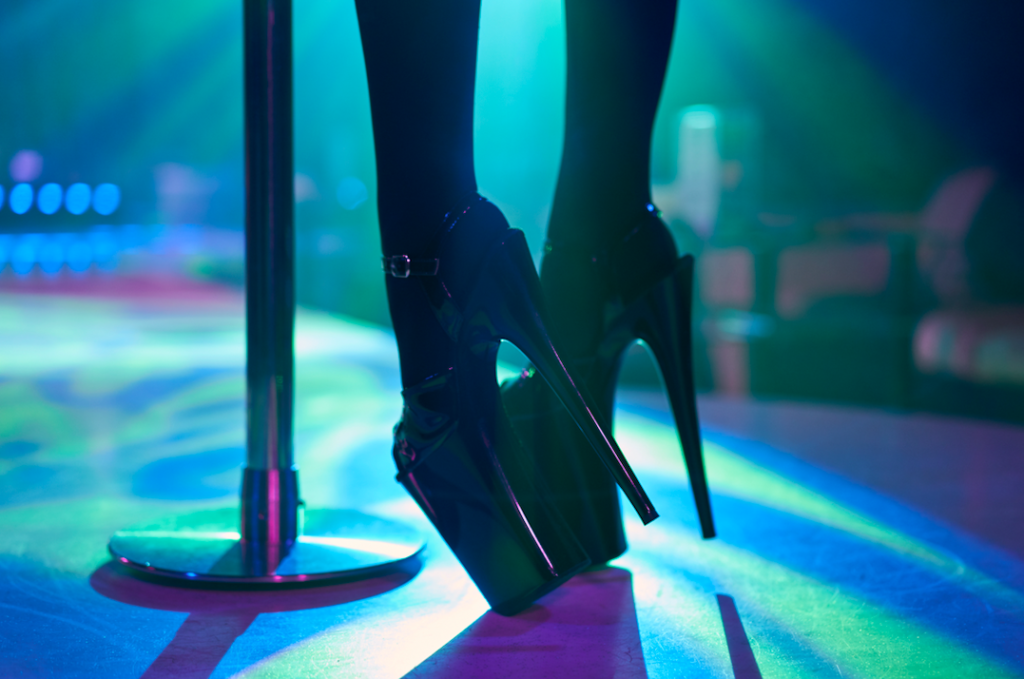
High heels are not famous for being comfortable. Shocker, right? It should come as no surprise that high heels present a high risk of long-term pain for frequent wearers, due to the pressure put on different parts of the feet. They’re also an injury risk, mostly from falling or tripping on uneven surfaces.
Pole heels are different. Testimonials from real pole dancers support the idea that, despite their sky-high height, the arches are less severe than everyday high heels, which negates the idea of harm caused by wearing them.
Different styles, such as boots, offer more support for the ankles and coverage for the toes and tops of the feet. Comfort is a major factor in the choice of footwear. Making pole heels functional in an athletic setting allows dancers to perform with fewer worries of an injury.
Fact #7: Pole dance pants are a thing
Pole dancing is very hard on the skin. When the body comes into contact with an object, “small blood vessels break in the skin and blood extravasates into the surrounding connective tissue, resulting in activation of the cellular response, followed by infiltration of the field of bleeding firstly with neutrophil granulocytes and then with macrophages.”
To those of us without science degrees, these are simply called bruises, and pole dancers get a lot of bruises.
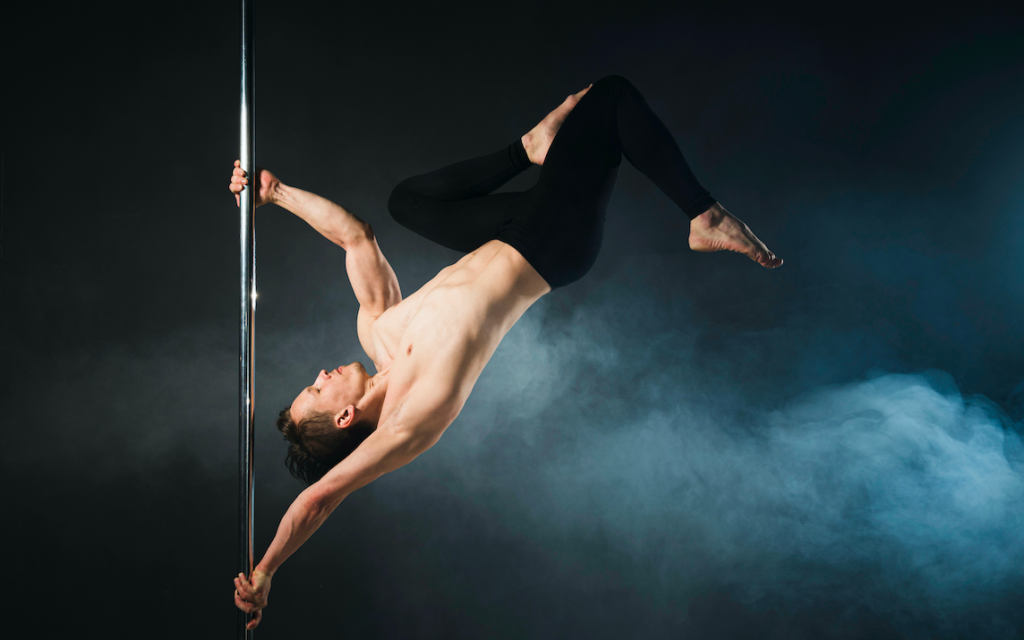
However, times are changing. Gone are the days of aggressive skin contact with the pole. Athletic apparel companies have started manufacturing “sticky pole wear” specifically for dancers that need extra grip. That includes pants and leggings that offer full coverage and eliminate direct skin-to-pole contact.
While bruising may still occur, some discomfort is erased through the use of sticky pole wear, which is created with a combination of polyester and Spandex.
Fact #8: Pole dancers can dance to any kind of music
Music is personal when it comes to dancing. Just choosing a genre can reveal personality traits that coincide with age, nationality, gender, and other statistics that reflect the listener in question.
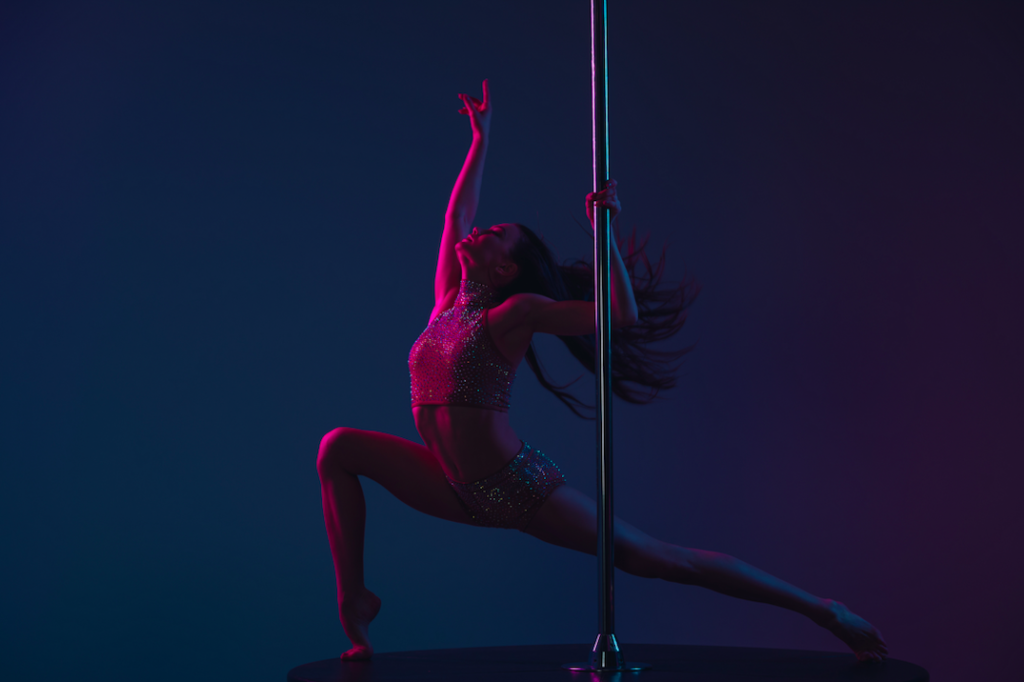
It can also be a signature part of an art form; the Nutcracker ballet would not be the same production if the performers danced to the Rolling Stones or KISS. Although those sweeping, classical sounds are signature to the Nutcracker ballet, not every ballerina has to dance in a Christmas-themed production to be a ballerina.
The number of subcategories in dances such as ballet, hip-hop, ballroom dancing and Latin dance is endless. Pole dancing is no exception. Dancers are combining pole with salsa choreography, pole dance tango, and even pole with belly dancing to create one-of-a-kind sequences for the world to enjoy.
Fact #9: Calling pole dance “exotic” is offensive
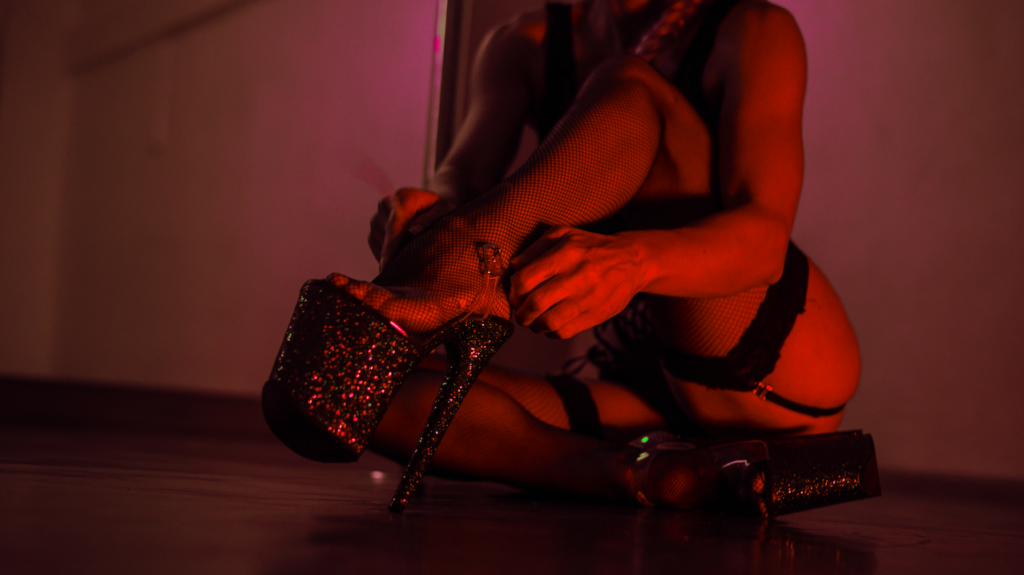
Words change their meanings all of the time. Ask anyone over 25 what “sus” means and they’ll have to consult their cousin with a TikTok account. However, some words come with a harmful history, and when it comes to pole dancing, the word “exotic” carries a somber weight.
The original definition of the word “exotic” is any person or thing that is “introduced from a different country” and is often used to describe animals. However, several dancers take offense to this term, as it was once used to describe the forced labor of immigrants and persons of color in human zoos, which is an unfortunate correlation to a dance that is simply from another country to most people.
Industry discussions define “exotic” as a category used to describe a hard-hitting style of dance that originated in Russia. As awareness of the definition of “exotic” continues to spread, many dancers are moving away from that exact verbiage in favor of more playful words. Choices such as as “sexy” and “floor f*ckery” are more generalized.
Fact #10: dancers are trying to get pole into the olympics
Dancers have been trying to get pole dancing into the Olympics for a long time. It’s a collective effort, from everyday dancers with GoFundMe campaigns to ultra-reputable companies pulling for pole dance to enter the big leagues.
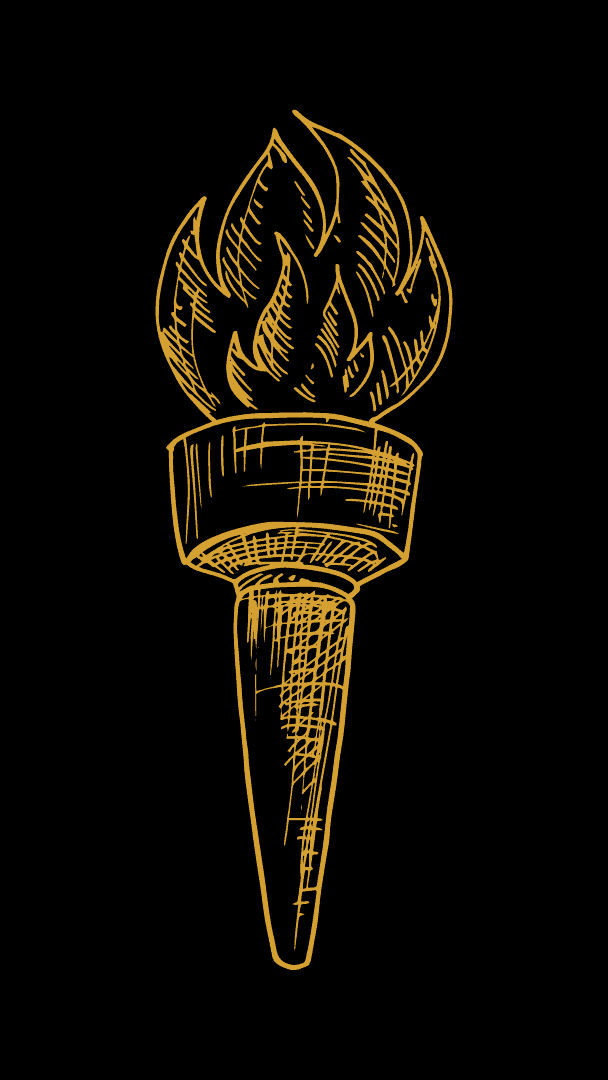
Organizations such as the International Pole Sports Federation (IPSF) have created resources for athletes to promote their skills and services. This would further advocate for pole dancing to break into the Olympics.
There are several criteria that a sport needs to match to qualify as an Olympic event, including factors such as popularity, an ethics code, and of course, the cost to house the athletes and the equipment they require. The 35-item list of requirements looks hefty, but if skateboarding can make it in, then pole dancing can too.
Do you know more facts about pole dancing?
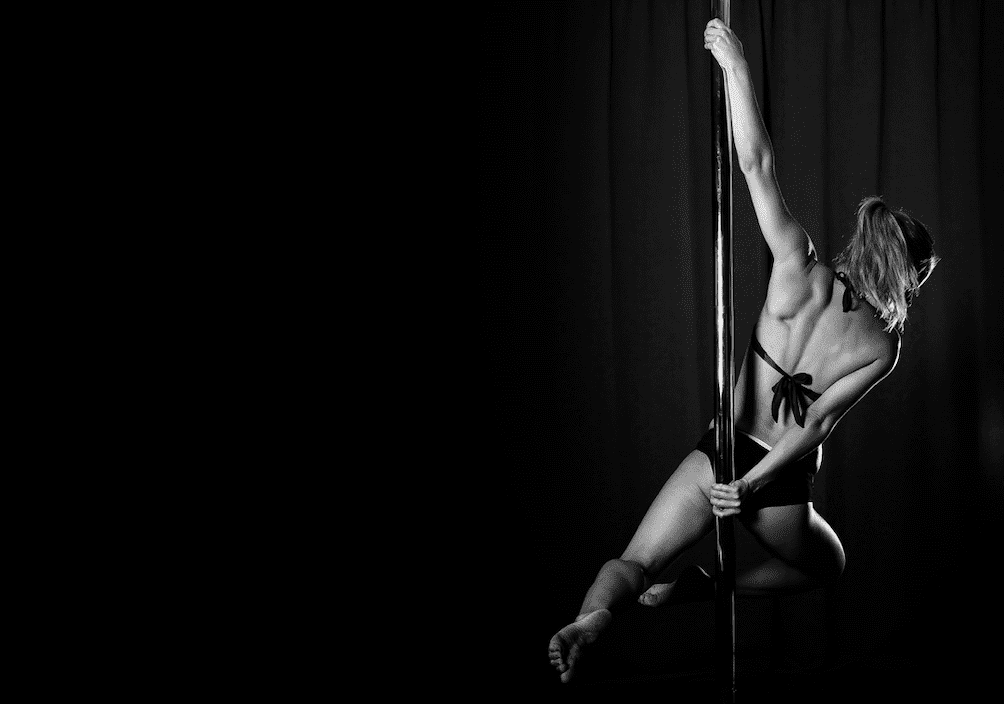
We’re lifelong learners here at Poletrotters. Comment below if there are any interesting facts about pole dancing that are missing (and there are probably a lot!) or if there’s anything interesting to share.